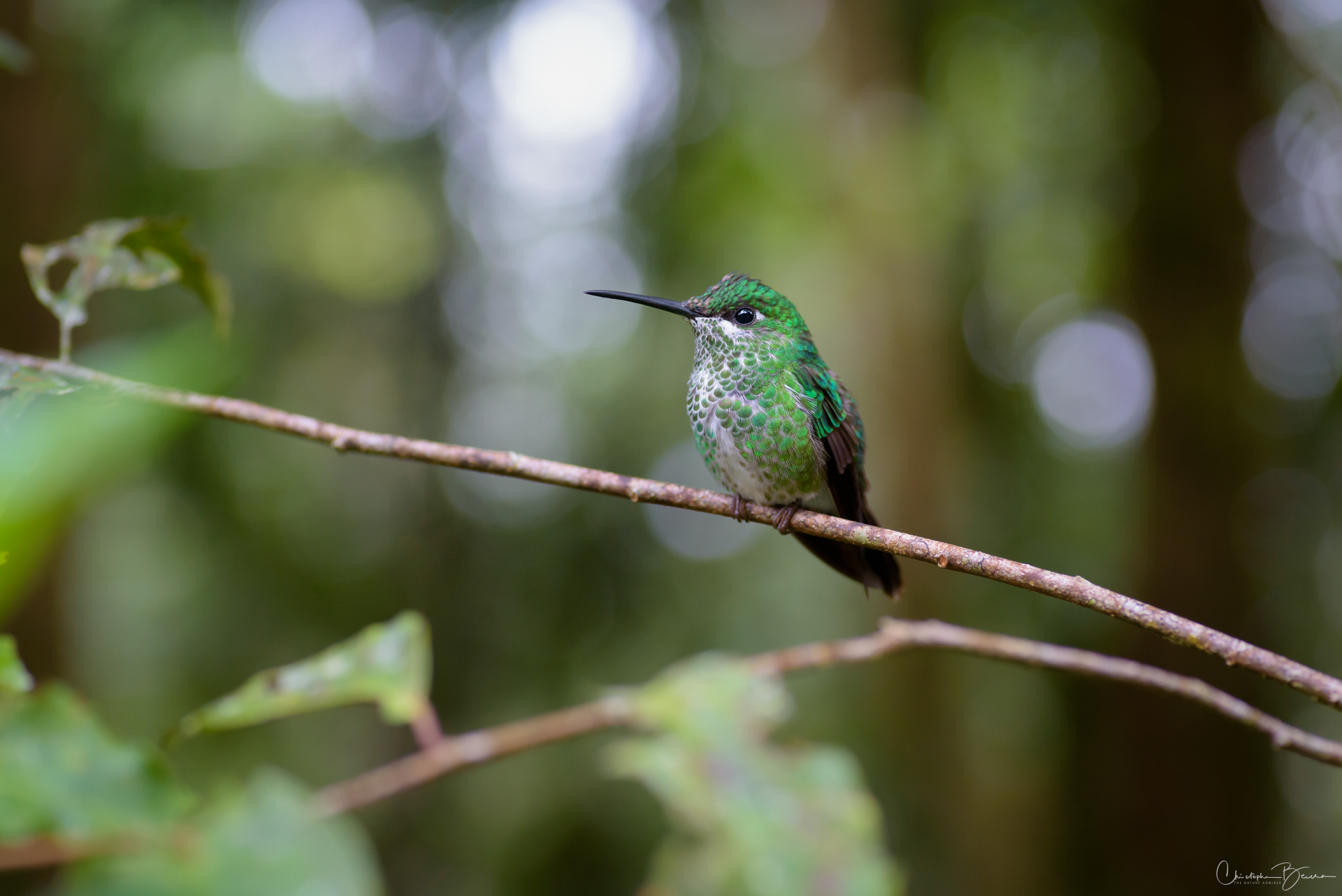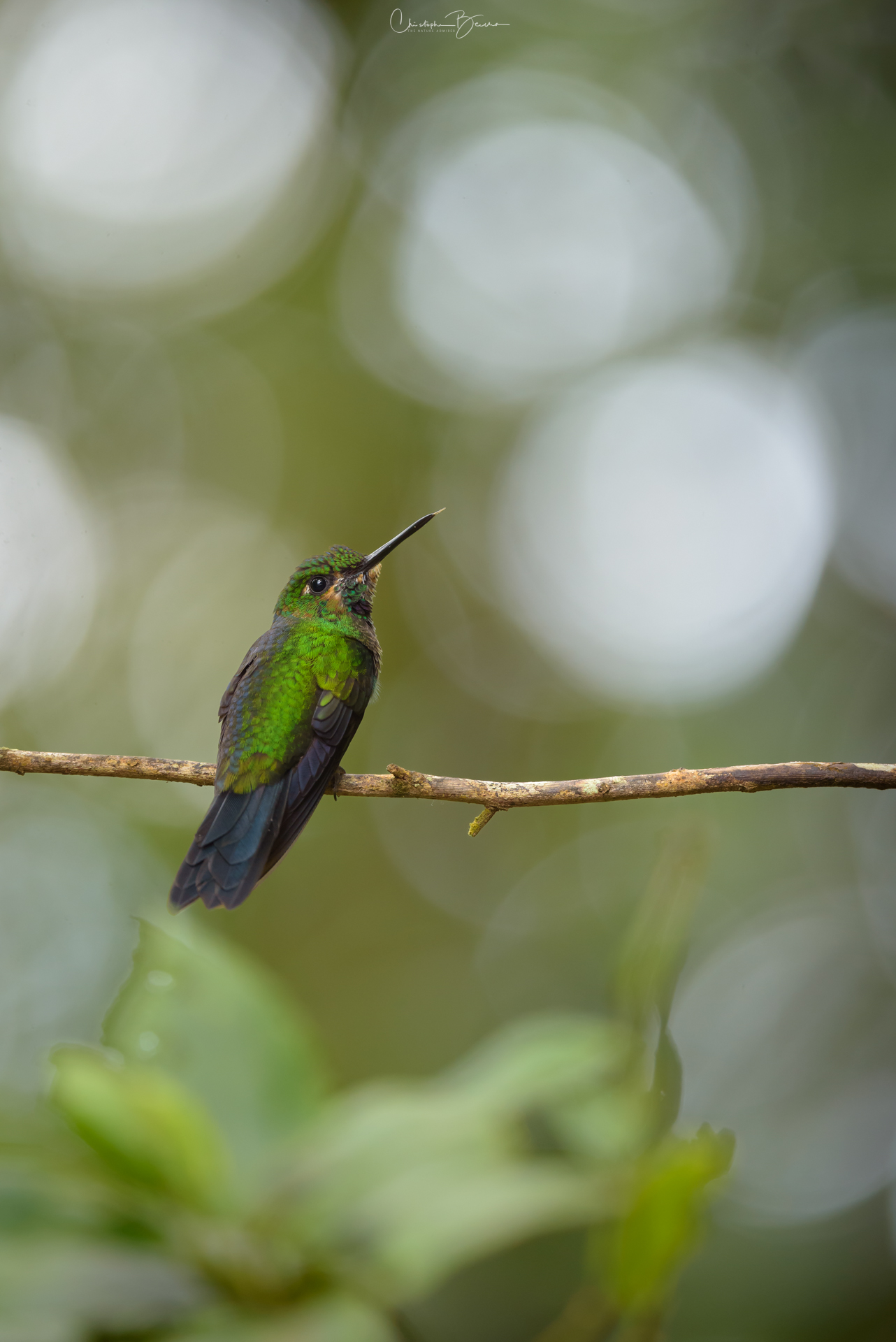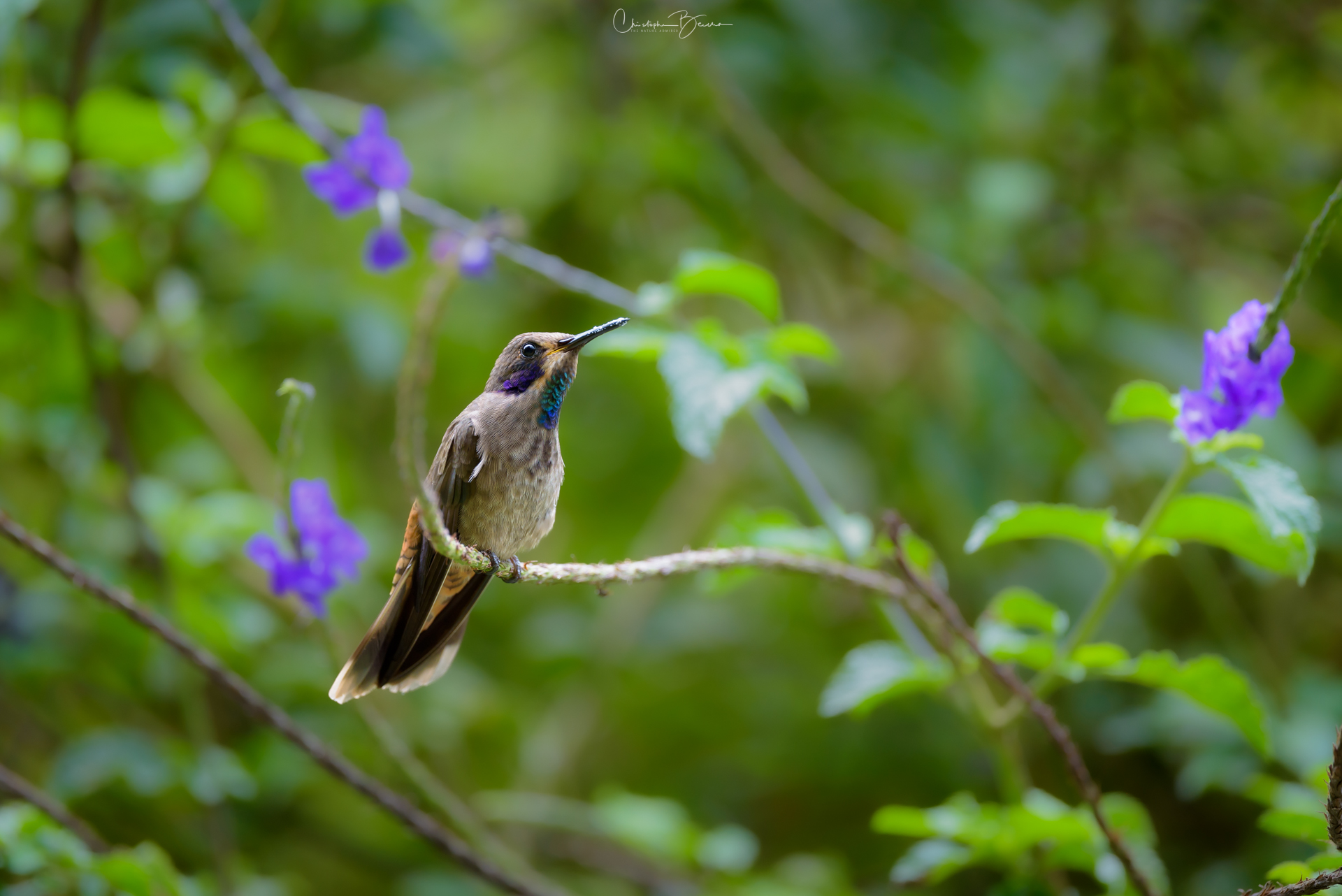Long-billed Starthroat (Heliomaster longirostris)
The Heliomaster genus contains four species, two of which occur in Costa Rica, including the Long-billed Starthroat that can be spotted in the Caribbean and northern lowlands, as well as in the south Pacific. It also includes the Plain-capped Starthroat, which is mostly seen in the north Pacific, central valley and some valleys in the south Pacific. Both Starthroats have longer than average bills which are straight, although both species have similar bills. The main difference between the Long-billed and Plain-capped is that the former displays a colorful blue-green forecrown, while the latter lacks that crown. To aid in identification, it can be noted that the Long-billed has a postocular spot, while the Plain-capped has a postocular strip. Other than those two specific traits, the two species are very similar, with olive upperparts and gray to white underparts, and a magenta throat that is iridescent. The tips of the tail feathers are white, which can be seen the most dramatically during flight.





























































